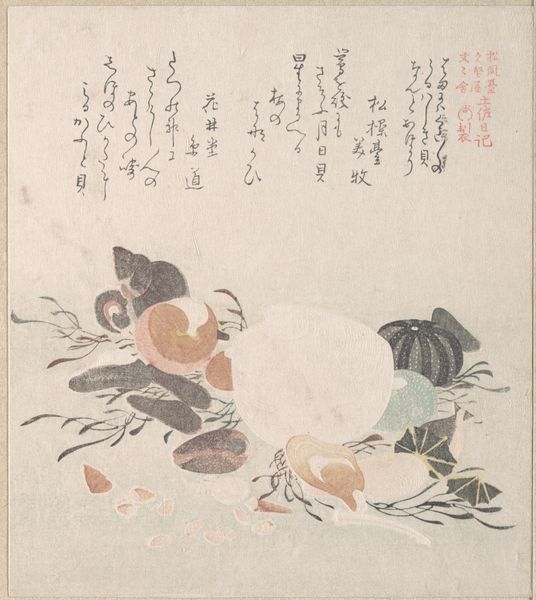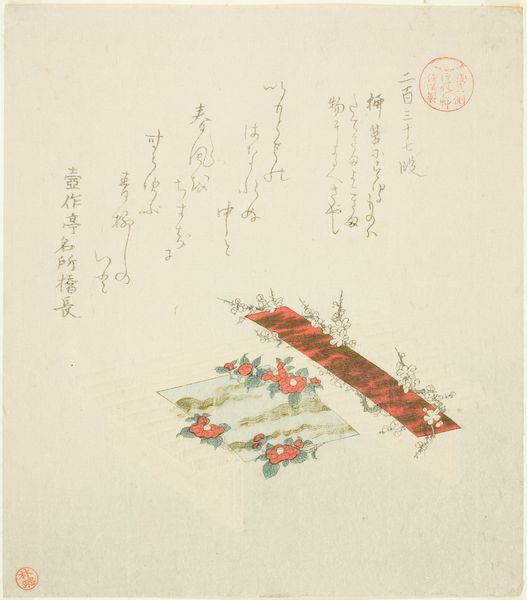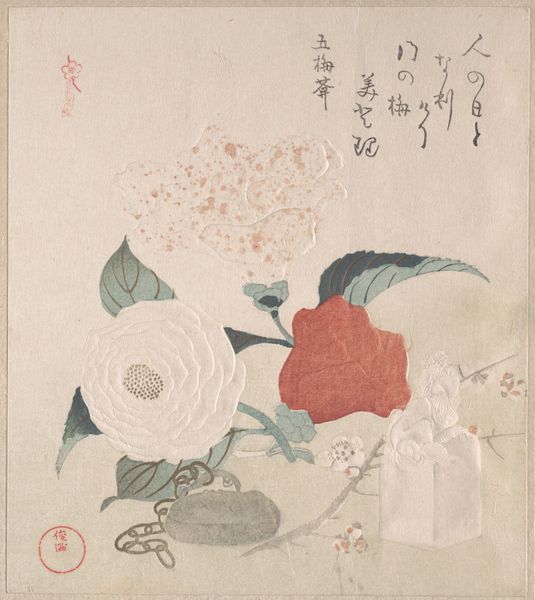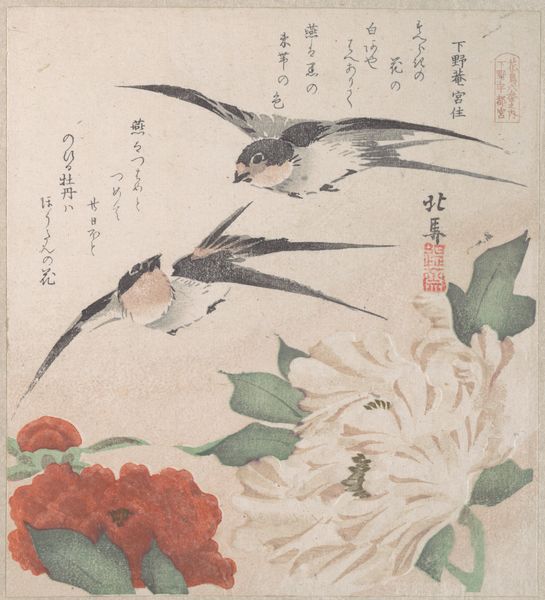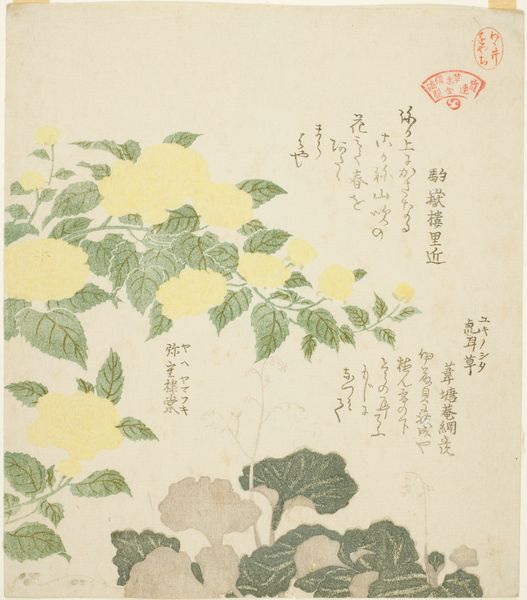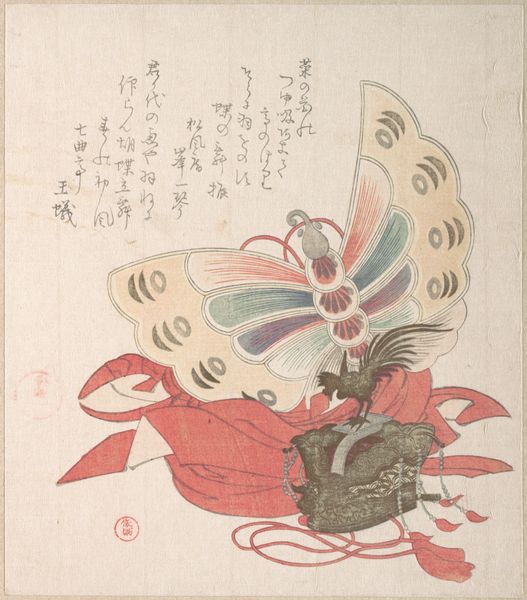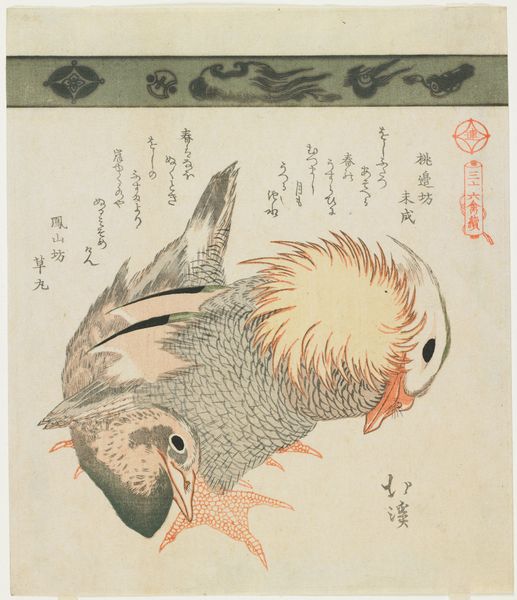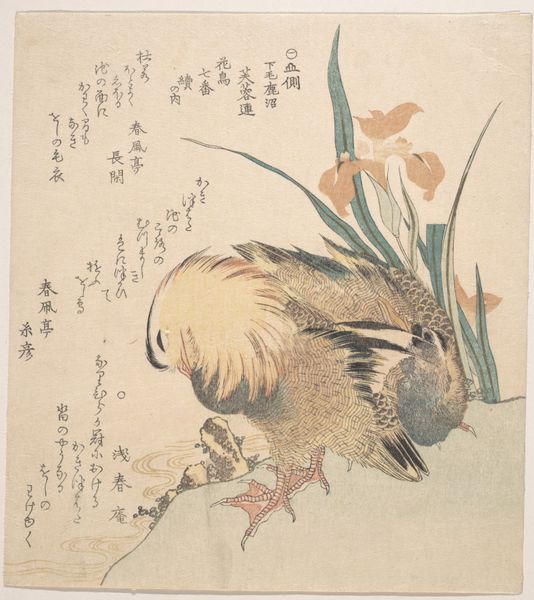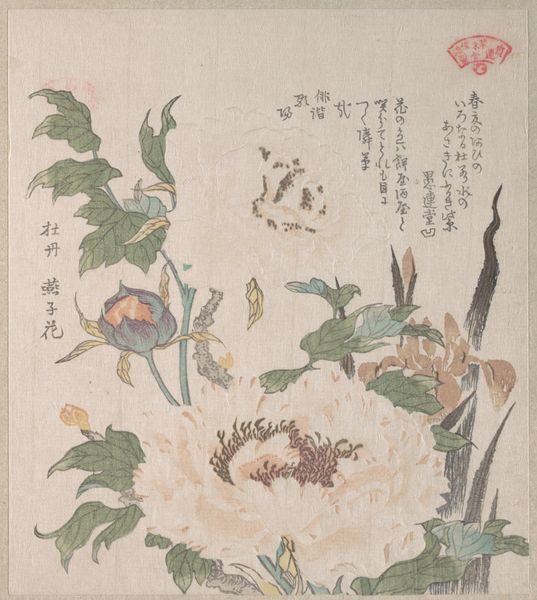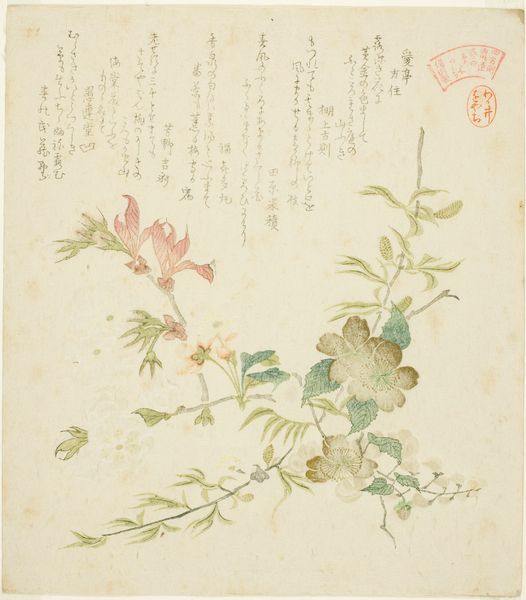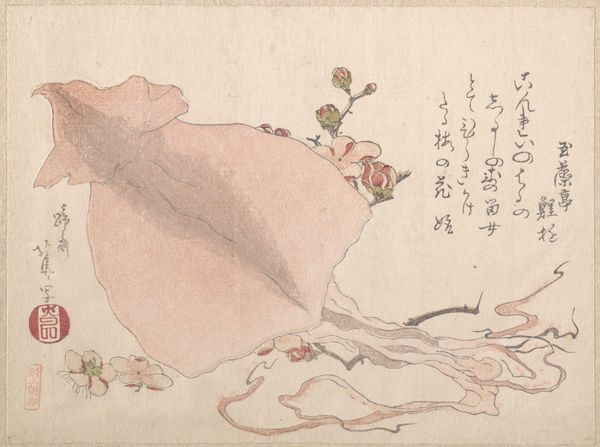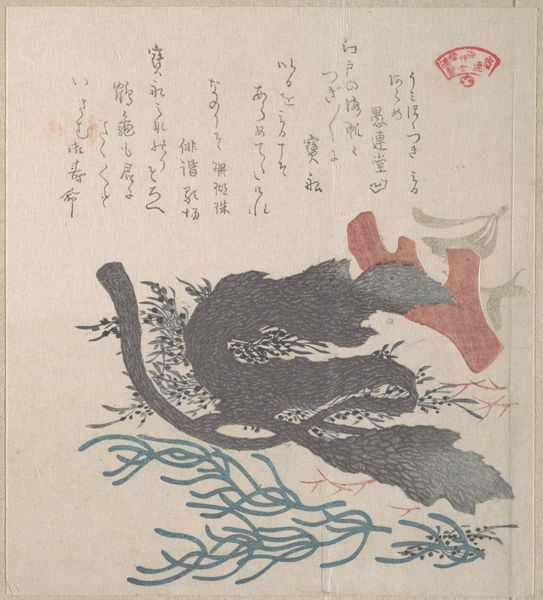
Cock, Hen, and Rising Sun, from the series "Seven Bird-and-flower Prints for the Fuyo Circle of Kanuma in Shimotsuke Province (Yamagawa Shimotsuke Kanuma Fuyo-ren kacho nanaban tsuzuki no uchi)" c. 1810
0:00
0:00
print, woodblock-print
#
animal
# print
#
asian-art
#
landscape
#
ukiyo-e
#
woodblock-print
Dimensions: 20.4 × 18.1 cm
Copyright: Public Domain
Curator: Looking at Kubo Shunman's "Cock, Hen, and Rising Sun," a woodblock print dating back to about 1810, what strikes you most? Editor: The muted color palette—it creates a kind of quiet atmosphere. It’s gentle and feels subtly political in its calmness. I mean, you've got the rising sun motif, usually so bold in Japanese art, almost whispering here behind the bird. Curator: Interesting observation. These kinds of bird-and-flower prints, part of the Ukiyo-e tradition, were extremely popular, especially amongst literary circles like the Fuyo Circle. They served both as art and social commentary. Do you think this print conveys social messaging? Editor: Absolutely. This imagery allows for critiques of power and society. The rooster, a symbol of masculine pride and authority, is humbled, even diminished by the sun. Consider what messages could be delivered during this period in history using powerful figures like these birds and the sun in this unique composition. Curator: Precisely. And the inscription connects the piece to that Fuyo Circle. It really illuminates the collaborative and community-driven nature of artistic creation at that time. This work blurs the lines of individual artistry to speak about something collective. Editor: It makes me wonder about the socio-economic status of those who consumed these prints. The level of literacy, access to art spaces or lack thereof… Art pieces such as this reflect accessibility. Were pieces like these accessible to anyone outside of the upper classes? And do these birds show any indication of an expression of the culture of the class they catered to? Curator: That’s key. The art historical view here also begs questions like these. Think about who held power and what societal shifts might have inspired this style. Editor: It invites reflection, doesn’t it? I mean what we think we see. It asks, were they really just prints, or subtle tools for societal discussion? Curator: Well, considering how art is always shaped by political landscapes, perhaps we find ourselves somewhere in the middle, yes? It does offer a fresh perspective on an era long gone, through nature's beauty, and of our roles of who interprets history in hindsight.
Comments
No comments
Be the first to comment and join the conversation on the ultimate creative platform.
